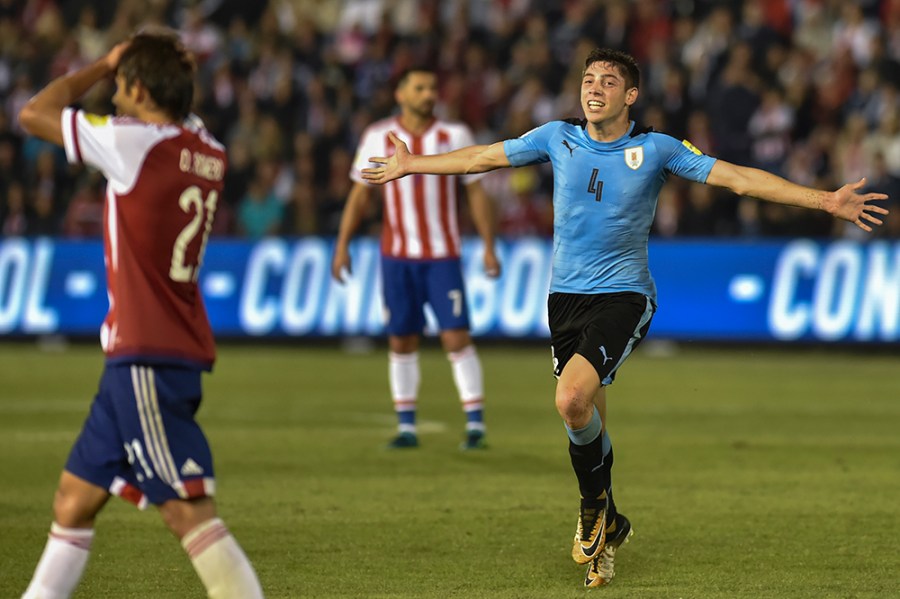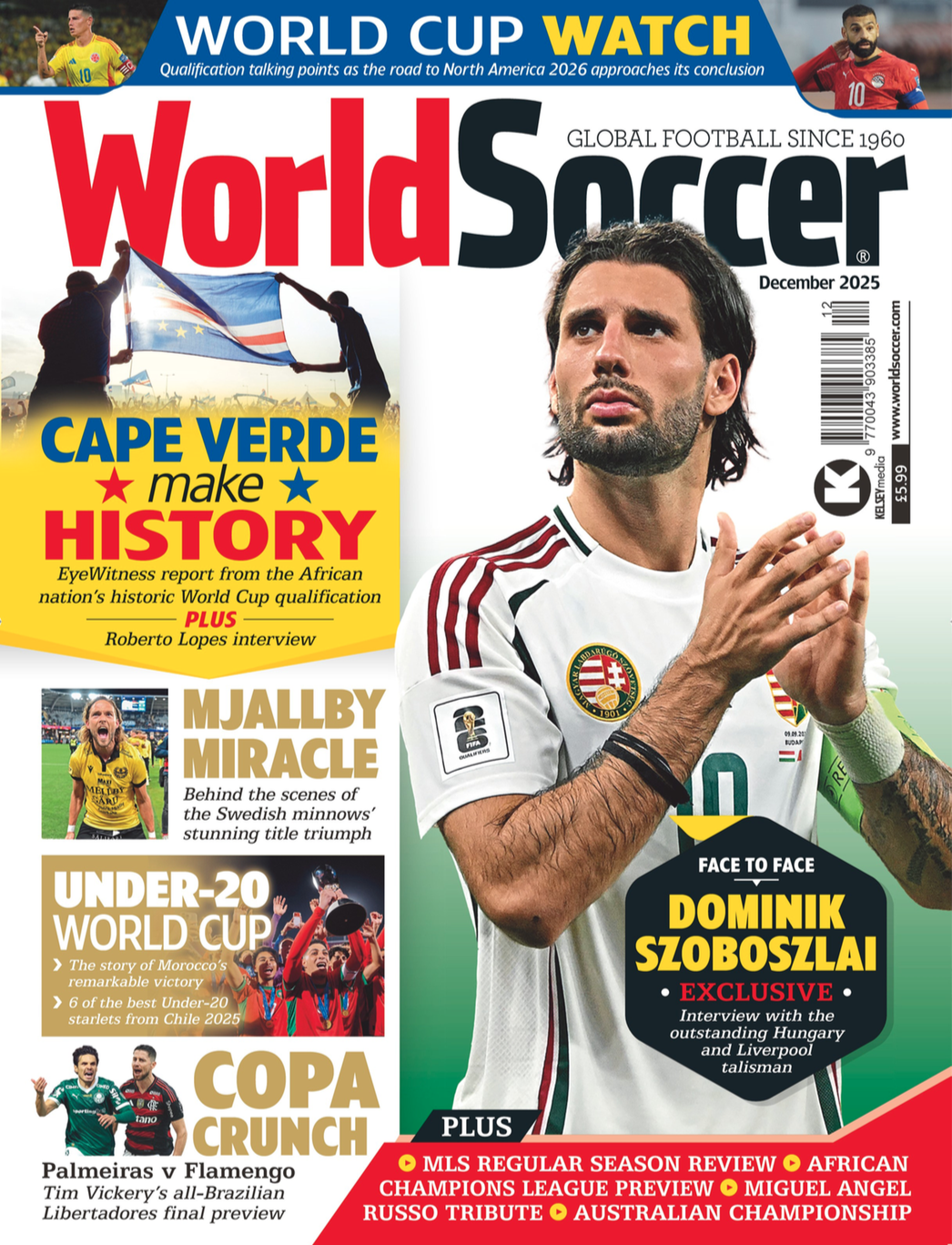There is almost too much drama to take as South America’s World Cup qualification campaign moves into Tuesday’s final round. Amid the threat of elimination hanging over Argentina, and continental champions Chile, the remarkable resurgence of Paraguay and a crunch game between Peru and Colombia, Uruguay are flying under the radar.
Little space has been devoted to the fact that, barring a mathematical miracle, the Uruguayans have already booked their place in Russia. This breaks a pattern. In all of the other campaigns this century Uruguay got underway with a comfortable win at home to Bolivia only to wobble along the way before just managing to clinch the play-off slot in the final round.
This time, though, they round off their matches with a home game against Bolivia and the hard work already done. Only a series of all but impossible results could deprive them of automatic qualification.
The absence of last round tension might cause an impression that this time round it has all been plain sailing for the Uruguayans. This would be very misleading. As recently as last month there were fears that the campaign was hurtling downwards. But the process of team building is dynamic – and suddenly there are little sings that Uruguay might be dangerous opponents in Russia next year.
They got off to an excellent start, and led the table at the half way stage. Luis Suarez was suspended for the first four games, Edinson Cavani injured for the first two, Diego Godin missing for a couple of early rounds. But even in the absence of these key players, Uruguay were brimming with confidence and clear about what they were trying to do. Under coach Oscar Washington Tabarez there are few efforts to win points for style. They were hard to play against, and sought to take advantage of decisive moments. The opponents were often expected to enjoy more possession, but Uruguay would bide their time and strike, typically winning the ball close to the opposing goal and breaking at pace.
Then they ran into problems, starting towards the end of last year. Away to Chile they took a first half lead, but collapsed to lose 3-1. In the next round in March they took an early lead at home to Brazil – and this time were routed 4-1. Then they went a goal up away to Peru – and lost 2-1.
A pattern was emerging in which the team was clearly no longer able to defend efficiently – especially disastrous for a side which expects to have a minority of possession.
The friendlies in June did nothing to steady the ship. Uruguay went down 3-1 to Ireland and 3-0 to Italy. With four rounds of qualifiers to go a place in the World Cup was now looking far from secure. Uruguay were third in the table – but only three points ahead of sixth placed Ecuador, who were out of the qualifying positions.
It was understandable, then, that the team that faced Argentina at the end of August looked utterly bereft of confidence. Despite playing at home, Uruguay rarely crossed the half way line, and were largely responsible for the dismal nature of the goalless draw. From their point of view, though, things were looking up. After three rounds of consecutive defeats they had picked up a valuable point and kept a clean sheet. Moreover, Tabarez had a vision of better things to come.
The centrepiece of the long reign of Tabarez – over 11 years and counting – is the attention that has been paid to the youth ranks, and the Under-20 side in particular. Here Uruguay look to identify and develop youngsters with the potential to play a long term role with the senior side. The conveyor belt of talent that has emerged from this level goes a long way to explaining how a country with such a small population is once again punching above its weight.
This year’s Under-20 side reached the semi finals of the level’s World Cup before losing to Venezuela on penalties. They were capable of better. But, as always, the priority is producing players for the senior squad. And straight after the 0-0 draw with Argentina, central midfielder Federico Valverde was brought into the starting line up for the next game, a crunch visit to Paraguay.
It was a triumphant debut. Not only did Valverde score the opening goal in Uruguay’s 2-1 win, but he also brought some much needed all round quality to the side. And for the last half hour of Thursday’s goalless draw away to Venezuela he was joined by a colleague from the recent Under-20 campaign, Rodrigo Bentancur of Juventus.
Suddenly there is a glimpse of a very different Uruguayan midfield. The defensive unit is the same as that which started the qualification campaign – and Suarez and Cavani continue to form the attacking partnership. But over the course of the campaign, and especially in the last few months, there is a new midfield emerging.
In the opening round the anchor role was still filled by little Egidio Arevalo Rios, a symbol of the side for his unselfish tenacity, with Carlos Sanchez on the right, utility man Alvaro Gonzalez in the middle and the squat, gifted Cristian Rodriguez on the left. All of these players remain in the squad. But they are being replaced by a new generation.
Matias Vecino, a 2011 Under-20 graduate, is now the anchor, alongside Valverde. For the last three games Sanchez has lost his place to Nahitan Nandez, from the 2015 Under-20s. And when Bentancur came on for Rodriguez the transformation was complete. Uruguay could count on a young, dynamic quartet, with the lung power to close the gaps and protect the defence, and the passing quality to work little triangles and bring the strikers into the game.
Suddenly, then, Uruguay are starting to look like side that in Russia next year might be able to achieve both of the coach’s aims – be difficult to play against and carry an attacking punch.







